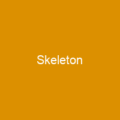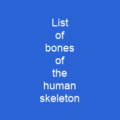The Foot: An Intricate Structure
Imagine a complex, yet often overlooked, structure that supports your every step—your foot. It’s more than just a simple appendage; it’s an intricate network of bones, muscles, and ligaments working in harmony to keep you moving. How many times have you taken the foot for granted?
The Anatomy of Your Foot
Your foot is divided into three main sections: the hindfoot, midfoot, and forefoot. Each part plays a crucial role in your ability to walk, run, or dance. The hindfoot, consisting of the talus and calcaneus bones, acts as a shock absorber. The midfoot includes the navicular, cuboid, and cuneiform bones, which provide stability. And the forefoot, made up of metatarsals and phalanges, allows for precise movements.
Muscles Acting on Your Foot
The muscles that control your foot can be categorized into two groups: extrinsic and intrinsic. Extrinsic muscles are those originating from outside the foot, while intrinsic ones originate within it. Let’s dive into some of these key players:
- Extrinsic Muscles
- Extensor Group: These include tibialis anterior, extensor digitorum longus, and extensor hallucis longus. They help in lifting the foot’s medial edge (supination) and bringing the leg toward the back of the foot during rapid walking.
- Peroneal Group: Comprising peroneus longus and peroneus brevis, these muscles aid in plantar flexion and pronation. They act like a bowstring to brace the transverse arch of the foot.
- Posterior Group: This group includes triceps surae (soleus, gastrocnemius) and plantaris, which are primary plantar flexors. Their strength is particularly noticeable during ballet dancing.
- Intrinsic Muscles
- On the top of the foot: Extensor digitorum brevis and extensor hallucis brevis, which dorsiflex the digits.
- Muscles of the big toe: Abductor hallucis, flexor hallucis brevis, and adductor hallucis. The abductor hallucis stretches medially along the sole, while the flexor hallucis brevis is crucial for ballet dancing. The adductor hallucis acts as a tensor of the plantar arches.
- Muscles of the little toe: Abductor digiti minimi, flexor digiti minimi, and opponens digiti minimi. These support the arch of the foot and plantar flex the fifth digit.
These muscles work together to ensure that every step you take is a coordinated effort, from lifting your toes to pushing off with your heel. Isn’t it amazing how such complex movements are managed by these tiny yet powerful muscles?
The Challenges of Foot Health
Your feet are not just passive participants in your daily activities; they can be the source of various issues, from athlete’s foot to stress fractures. Have you ever wondered how many times a day you put pressure on your feet? Excessive strain on tendons and ligaments can lead to conditions like fallen arches or flat feet. Genetic disorders can also affect the shape and function of your feet, making them more vulnerable to medical problems caused by poor leg and foot alignments.
Foot Care and Specialization
To address these issues, podiatrists specialize in treating foot conditions, while pedorthists modify footwear to treat lower limb problems. Do you know what kind of care your feet are receiving? Fractures of the foot can range from Lisfranc fractures to broken toes, each requiring specific attention and treatment.
Pronation: The Art of Walking
The way your body distributes weight during gait is known as pronation. Types include neutral pronation, underpronation (supination), and overpronation. Neutral pronation involves a natural inward motion that absorbs shock efficiently. Overpronation means excessive weight on the hallux, leading to uneven distribution of weight across the metatarsus. Underpronation or supination involves not enough rolling motion, with excessive weight on the fifth metatarsal and lateral side of the foot.
Cultural Contexts and Footwear
While humans typically wear shoes for protection while walking outside, there are cultural contexts where it’s considered rude or inappropriate to wear shoes indoors. How do your footwear choices reflect your culture? High-heeled shoes can throw off natural weight balance and affect lower back posture, so flat soles are often recommended.
The Foot in Language and Culture
The word ‘foot’ has a range of meanings beyond its anatomical definition. It’s used as a unit of measurement, a musical term for a metrical beat, and an old-fashioned way to refer to a person. Expressions like “to put one’s best foot foremost,” “to put one’s foot in (one’s) mouth,” and “flat-footed” have rich histories and cultural significance.
The Evolution of Foot Structure
Animals can be classified into three types based on their foot structure: plantigrade, digitigrade, and unguligrade. The metatarsal bones in humans are tightly grouped compared to other parts of the body, contributing to our unique gait.
The Foot as a Metaphor
Metaphors involving feet abound in language. “To put one’s best foot foremost” encourages us to present our best selves. “To put one’s foot in (one’s) mouth” warns against careless speech. And being “flat-footed” can mean unprepared or lacking in knowledge.
Conclusion
The foot is a marvel of engineering, supporting us through every step and dance move we make. From its intricate anatomy to the cultural significance it holds, our feet are more than just appendages—they’re essential for movement, expression, and even language. Next time you walk or dance, take a moment to appreciate the complexity and importance of your feet.

You want to know more about Foot?
This page is based on the article Foot published in Wikipedia (retrieved on February 27, 2025) and was automatically summarized using artificial intelligence.







